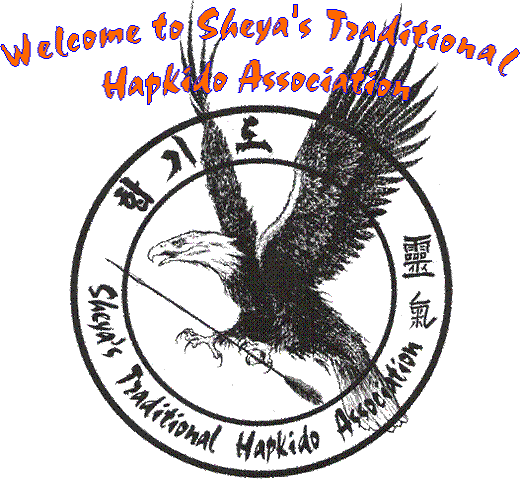
Hapkido Description
Hapkido students learn effective self-defense techniques against grabs, punches, kicks, and weapons.Hapkido motion takes the path of least resistance, and uses joint-locking, flips, and throws to control the attacker. To get beyond this superficial explanation requires the use of some terms that may be unfamiliar.- Ki
- The Japanese and Korean term, Ki, with its Chinese equivalent, Chi, is analogous to English language concepts such as energy, life force, animating principle, and spirit. For Hapkido students, Ki is the central concept around which the system is built. While practicing Hapkido techniques, the student simultaneously develops awareness of and openness to the universal energy that underlies all of creation. As the student of traditional Hapkido progresses to the advanced techniques of higher ranks, the emphasis shifts away from the purely mechanical orientation of the beginner, and toward an awareness of Ki flowing through the body. Ultimately, the advanced Hapkido practitioner allows his awareness of Ki to guide his movement. The Hapkido master does not appear to be doing much when attacked; instead, the master is content to allow his assailant to accomplish all of the doing. The master’s awareness is of Ki: his own and his attacker’s. In an important sense there are no longer two individuals, but one.
- Connection
- Traditional Hapkido is often referred to as a "soft" martial art. This description is based on the Hapkido philosophy of connectedness, or connection. Hapkido students learn the importance of being physically connected to an opponent and their movement. More important, but more difficult to apply, is the notion that an opponent’s energy and a Hapkidoist’s energy are one energy. To be open to the universal nature of Ki is to allow the feeling that you are with your opponent, not against him. When Hapkido is based on this sense of connection, everything that occurs is effortless. Physical strength, size, and stamina are not required to be connected, and not required to be a Hapkidoist.
- Center and Extension
-
The concepts of center and extension are closely related. Center refers, on the one hand, to the
physical location just below the navel, which is considered by many martial artists, yoga
practitioners, and healers as the locus of a high concentration of energy. On the other hand, center
refers to the sense of being balanced, grounded, based, or rooted. The Hapkidoist stands upright,
with feet shoulder width apart, and hips rolled slightly to a position over the heels. In this
alignment, the Hapkidoist feels centered, and feels his awareness sink down into his physical
center.
Extension refers to the drawing out of someone else’s center. When an opponent lunges at a Hapkido practitioner, or attempts to hit or kick him, the Hapkidoist allows his opponent to become extended, or unbalanced. The Hapkidoist accepts the force and momentum of his assailant, and uses this energy to uproot his assailant. As his opponent becomes extended, the Hapkidoist becomes connected to his opponent. They move as one.
- Hapkido Motion
-
There are many motions in Hapkido. The motions develop physical ability, improve balance,
establish connection, and emphasize the principal of being centered. Some motions are
"exercises," insofar as they are intended to familiarize the student’s body with various
techniques. Many other motions are "practical," i.e., they can be used in self-defense.
The motions are desribed in general terms in the article on Belt Ranks.
Hapkido is a complete system of motion. The motions in the higher belt ranks build on the lower motions. There are many responses to any given attack, and many ways of completing each response. The wide variety of interdependent techniques makes Hapkido unique. Most important, each technique gives the student a different perspective from which to view the one "technique" that is Hapkido. This one technique is not really a technique at all, but the limit of an infinite number of techniques. You are centered, extending Ki. You accept your attacker's energy, allowing him to extend, and you become connected to him. You now have taken his center and control it, enabling you to control his body in a manner appropriate to the circumstances. This one technique, Hapkido, must be experienced many times from many different perspectives to be learned.